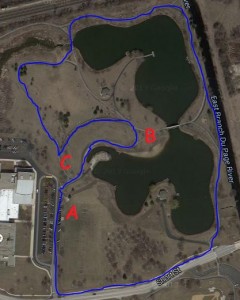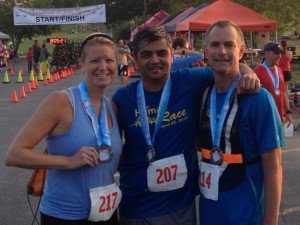In exactly one week, I’ll be running my first marathon. While I’ve been running for a while without much interest in running a marathon, I have to say, I’m am excited and looking forward to it. It’ll be a nice conclusion to a whole lot of early mornings and long runs. I feel pretty prepared, I’ve done my miles and exceeded by pace goal during my 20 miler training run, but it was a hard run. It was all one foot in front of the other for the last 2 miles. Although I will say that I did lose some of my gels along the way so that may have contributed to my fatigue. It was a good lesson learned though… wear shorts with deeper pockets!
While my goal is under 4 hours, I’ve been thinking a lot about whether I want to focus on my pace, or get a slightly higher time and enjoy the race. The two ultras that I’ve done before were all about just finishing, so there wasn’t as much a focus on pace and time. I really enjoyed the camaraderie of those experiences. Plus I didn’t have a lot to be able to compare them against. But with the marathon, I feel like my whole training has focused on trying to get a 9 min/mile pace. I know a lot of this will eventually depend on factors that are outside my control like rain or high temperature or even spending too much time dodging people. And a lot of it will also depend on how I feel that particular day. But I keep thinking that I’ll miss some of the experience if I focus too much on hitting the 4 hours and I’m not sure I’ll do a marathon, at least one that’s this large, again.
Though in the past running at a single pace has been a challenge for me, my plan right now is to run with the 9 min pace group for at least the first 18 miles. Then if I’m still feeling good, pick up the pace a little for the last 8. Otherwise, I’ll try to keep up with the group and hopefully find people to talk to who will keep me motivated. Worst case scenario, I can drop back a little as I will still have some leeway at that point to slow down and meet my goal. If for some reason I don’t reach it, I’ll still be satisfied with a sub 4:30 time, and happy with a 4:15. And I keep telling myself that regardless of what time I come it at, at the end of this, I’ll have had the experience and the achievement in the books, which ultimately will be more important than how quickly I finished. And if I am not happy with my time, I can always run another one.




